- Extinct carnivorous family, potential ancestors of caniforms, lived 37-9 million years ago.
- Ambush hunters with explosive speed, adapted for quick pursuits.
- Beardogs often specialized in hunting swift, small prey for survival.
The Amphicyonidae, or beardogs, are a family of extinct carnivorous animals. Some evidence suggests that the Amphicyonidae were the ancestors of all caniforms, despite the fact that they are often thought to be closely related to the Ursidae (bears). About 37 to 9 million years ago, between the Upper Eocene and Upper Miocene, they greatly thrived on Earth. The paws of the beardog were designed for quick, explosive bursts of speed; thus, they likely hunted by ambushing their prey. Similar in size to an American black bear, the beardogs dug subterranean dens in which to rear their young. The weight of a beardog could range from 11 to 1,700 pounds.
What Exactly Was a Beardog?
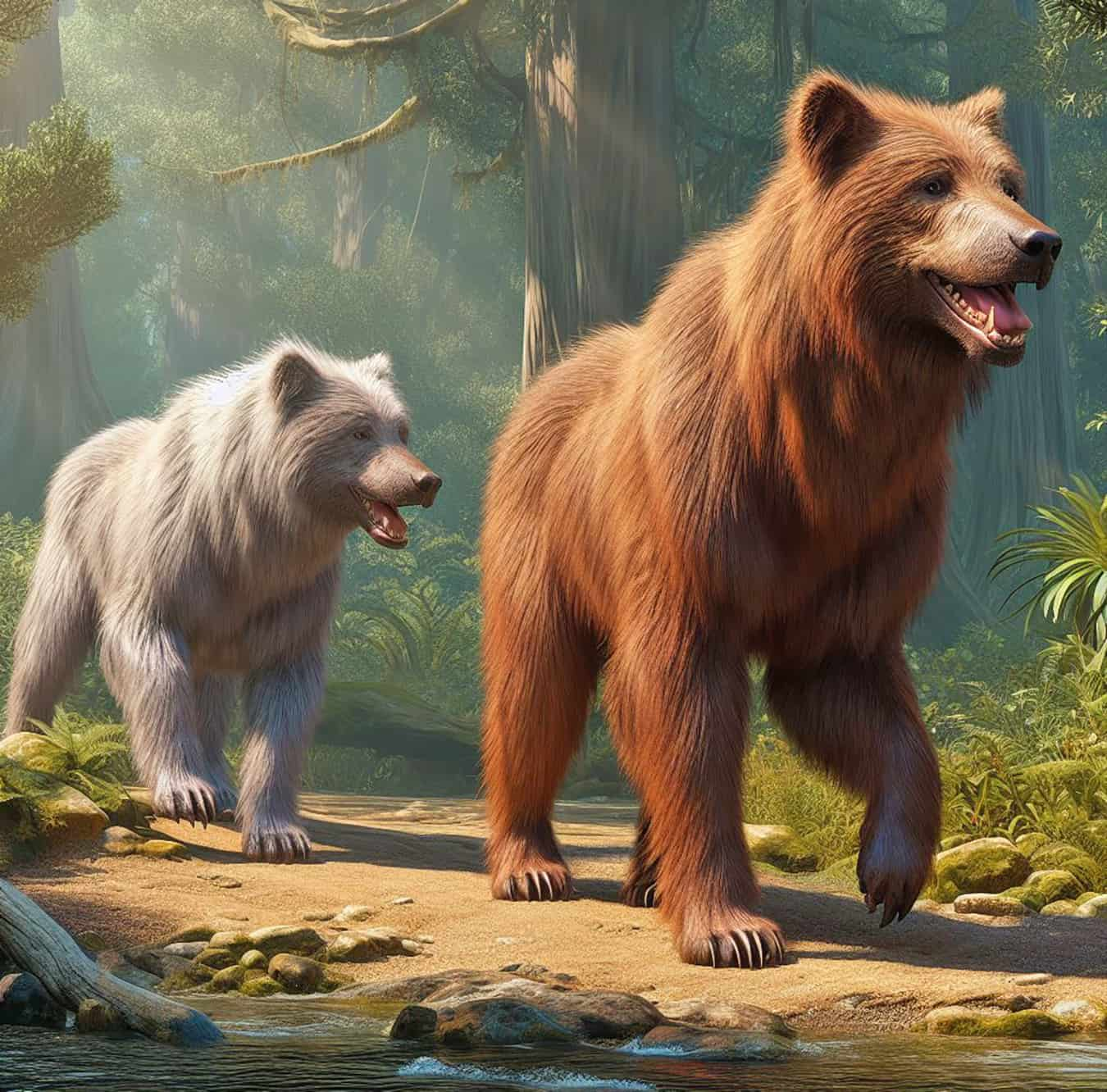
While the sizes of the beardogs, or Amphicyonidae, were comparable to those of primitive canids, their build was more akin to that of a bear. The majority of these animals walked plantigrade, like bears, with all of their foot bones touching the ground, as opposed to digitigrade, like dogs, whose toe bones simply serve as an extension of the length of the leg, with just the tips touching the ground. However, some paleontologists argue that the Amphicionidae are more closely linked to bears and should be placed in the infraorder Arctoidea rather than the suborder Caniforms (or Caniformia).
Their Evolution

Amphicyonids fossils from the genus Simamphicyon are the oldest known, and they date back to the middle of the Eocene, between 40 and 37 million years ago. However, some paleontologists argue that this species should instead be classified as a subfamily within the ancient Miacidae (primitive mammals). Daphoenus (an extinct genus of amphicyonids), whose fossils are dated to the Bartonian (41.2–37.7 Ma) of the Eocene, becomes the earliest representative of the beardogs in this scenario.
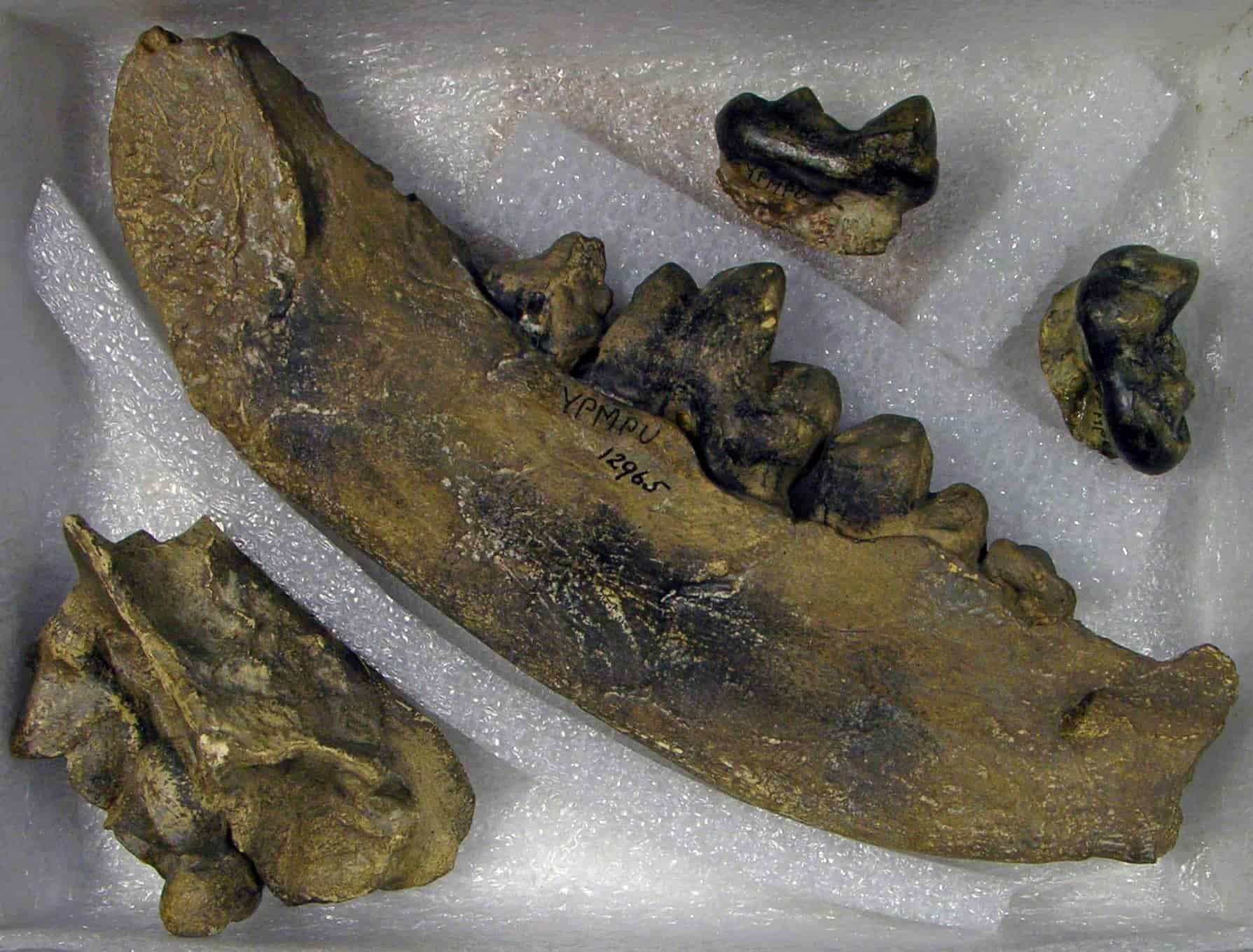
The widespread belief that Amphicyonidae originated in Asia is called into question by the discovery of their fossils in North America. According to another theory, about 45 million years ago, during the middle Eocene, the first beardogs made their initial appearance in North America. However, these species are believed to be a primitive ancestor rather than the actual Amphicyonidae.
Around 10 million years later, they reached Europe, and another 12 million years later, they expanded to Asia and Africa. Over time, their bodies changed from those of wolves to those of bears, but by the end of the Miocene, they had all but vanished from the face of the earth.
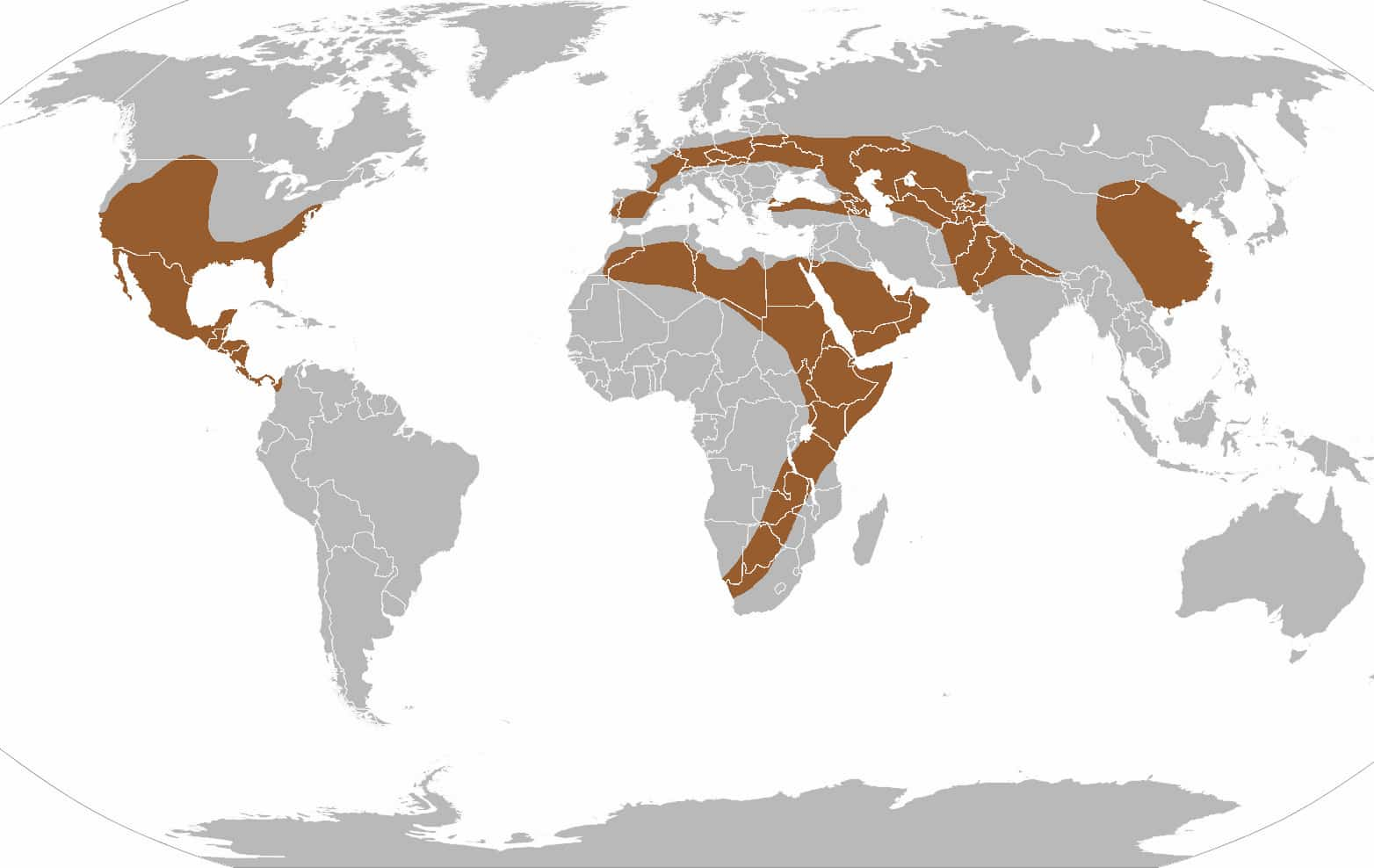
Still, the earliest known Eurasian representatives of the beardogs, Cynodictis (“slender dog marten”) and Guangxicyon (an extinct genus of amphicyonid that was discovered in southern China), belong to the Priabonian (37.7–33.9 Ma) stage of the Eocene (which was the last age).
The beardog subfamily Daphoeninae experienced continuous diversification from the end of the Eocene through the Oligocene, and the first representatives of the subfamily Amphicyoninae, including the genera Ysengrinia and Cynelos, migrated into North America during the Rupelian period (33.9–27.8 million years ago).
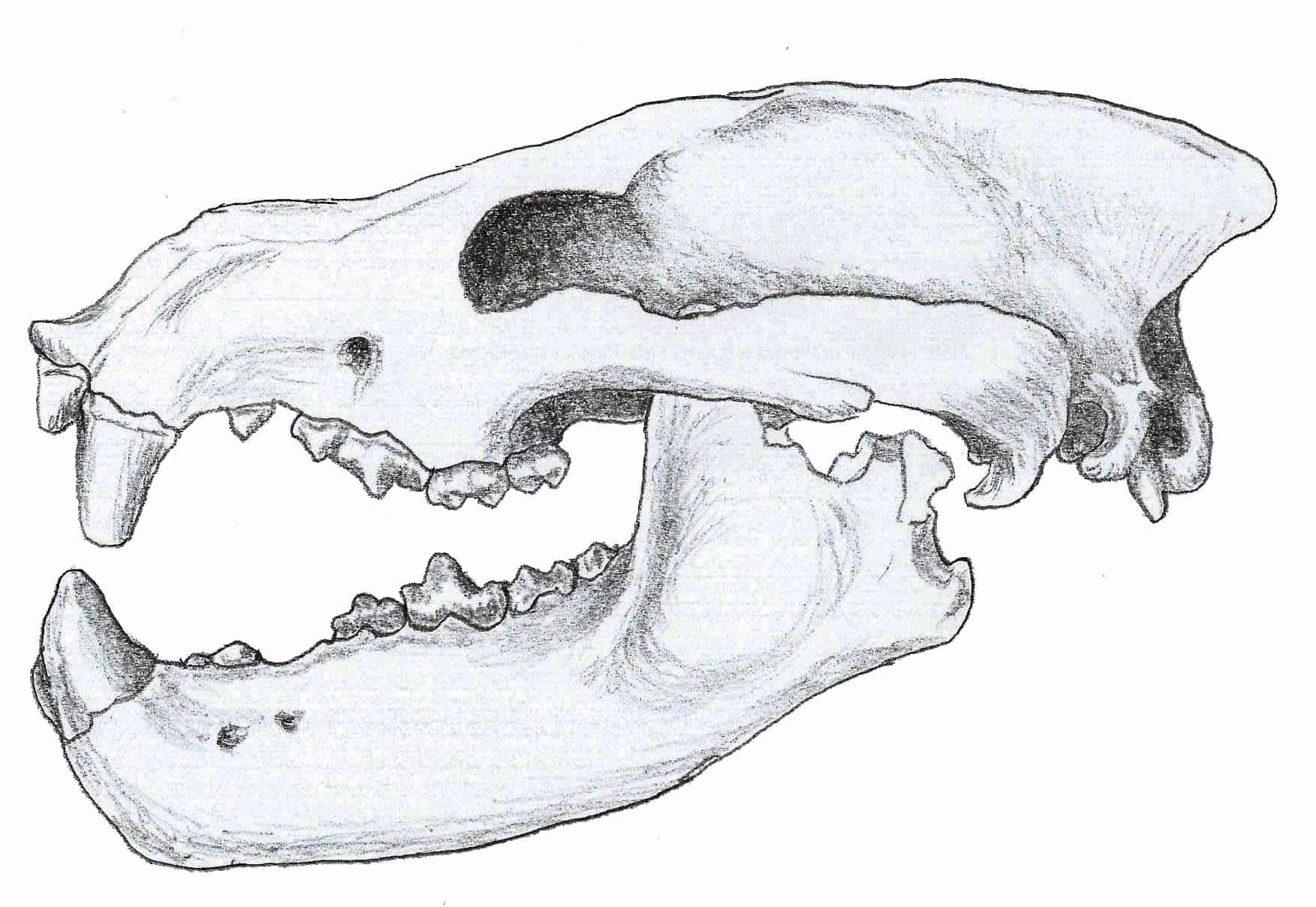
The Amphicyonidae family consistently displayed species that weighed around 200 pounds throughout the Oligocene, with the genus Paradaphoenus estimated to weigh around 4 pounds at most.
The existence of more advanced, earlier-evolved predators like the creodonts Sarkastodon or Hyaenodon, who were excellent hunters of mesonychids, and competition from the Nimravids and Entelodons, which were also effective predators, explains why their sizes were so disappointing. Because of this, beardogs developed a niche hunting strategy focused on tiny, fast-moving prey that the larger predators of the period could not catch.
The temperature change that marked the end of the Oligocene and the beginning of the Miocene resulted in the decline of forests, the rise of grasslands, and the subsequent rise of herbivore species more suited to extensive migrations. In the face of prehistoric, huge predators, this aided tiny and swift amphicyonids like Amphicyon, Pseudocyon, and Ictiocyon.
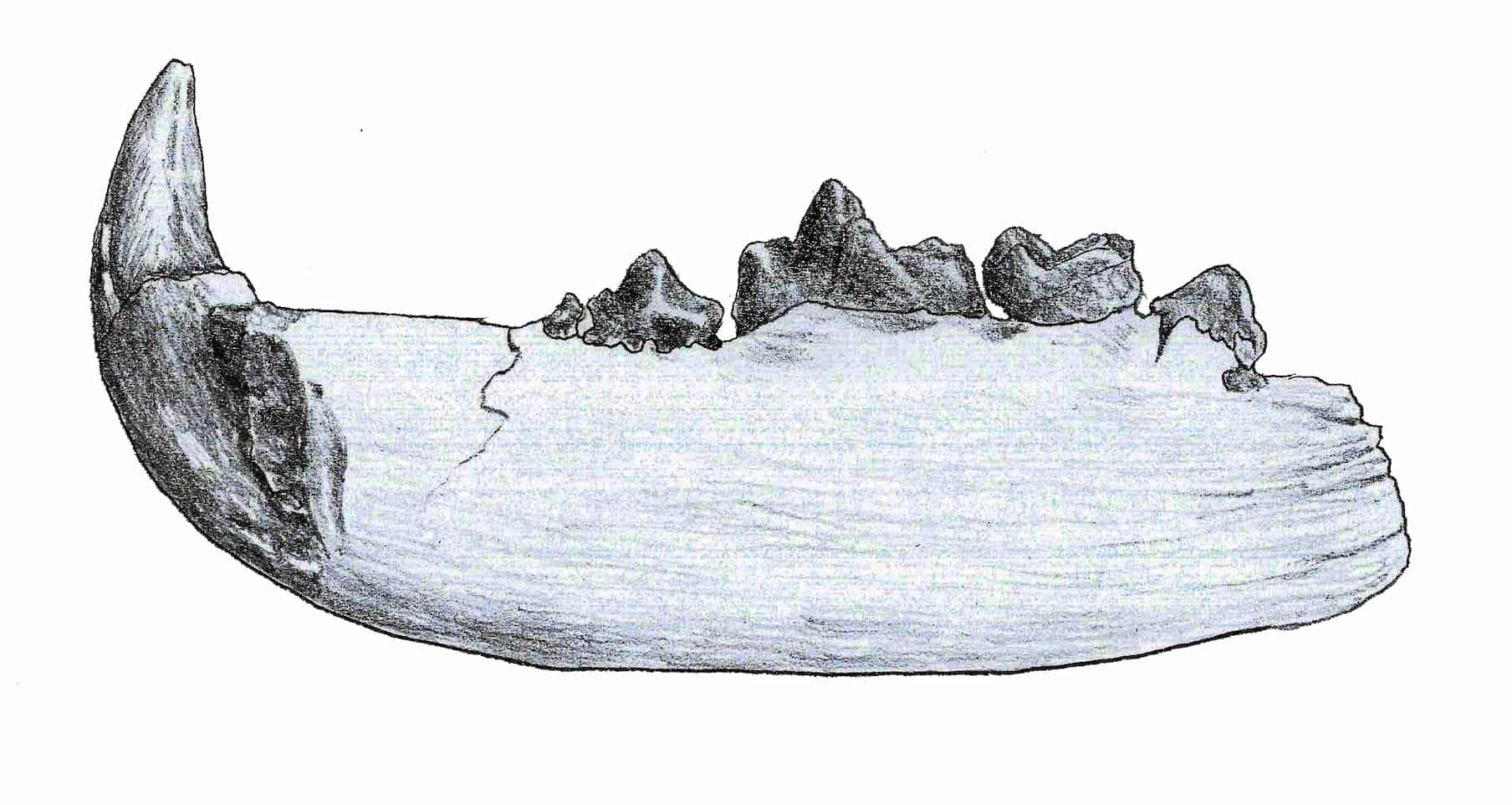
In addition to other Old World ungulates and small mammals, the arrival of Amphicyonidae in the Lower Miocene through the natural trans-Beringian route shows a lengthy period of faunal interaction between Asia and North America (23 to 16.5 million years ago).
Between 23.7 and 17.5 million years ago, Daphoenodon and New World temnocyon lived with Old World amphicyonids (Ysengrinia, Amphicyon, Cynelos).
The earliest progenitors of all living carnivore groups appeared between the end of the Miocene and the start of the Pliocene. The ancestors of today’s wolves, foxes, and other Felidae were not only more intelligent but also had specialized organs for life on the plains and steppes.
Research on fossilized skulls and brain casts suggests that early species had a lower level of cognitive development than modern carnivores, with more emphasis placed on the senses of smell and sight than on the part of the brain predisposed to problem solving and the emergence of possible social relationships with other species.
No fossils of beardogs or amphicyonids have been found that would indicate they engaged in pack hunting. It is possible that the extinction of almost all members of the family at the end of the Miocene was predetermined by competition with more effective carnivores and the development of ungulates into quicker and more agile forms. Only Amphicyon seems to have survived until the lower Pliocene in Asia, which is a genus of a beardog subfamily.
Their Evolutionary Scheme
Here is the evolutionary scheme of the beardogs (Amphicyonidae).
Amphicyonidae
- Simamphicyon helveticus
- Symplectocyon
- Vishnucyon
- Harpagocyon
- Daphoeninae
- Daphoenus
- D. hartshornianus
- D. lambei
- D. ruber
- D. socialis
- D. transversus
- D. vetus
- Paradaphoenus
- P. cuspigerus
- P. minimus
- P. tooheyi
- Daphoenodon
- D. falkenbachi
- D. notionastes
- D. skinneri
- D. superbus
- Borocyon (Daphoenodon)
- B. neomexicanus
- B. niobrarensis
- B. robustum
- Daphoenictis
- Brachyrhynchocyon
- B. dodgei (sin. Daphoenocyon minor)
- B. intermedius
- B. montanus
- Adilophontes
- A. brachykolos
- Brachyrhynchocyon
- Daphoenus
- Amphicyoninae
- Guangxicyon sinoamericanus
- Euroamphicyon olisiponensis
- Amphicyanis
- Brachycyon
- B. reyi
- B. palaeolycos
- B. gaudryi
- Cynodictis
- C. elegans
- Haplocyoninae
- Haplocyon
- H. dombrowski
- H. elegans
- H. crucians
- Haplocyonoides
- H. mordax
- H. serbiae
- H. ponticus
- Haplocyonopsis
- Haplocyon
- Temnocyoninae
- Protemnocyon inflatus
- Temnocyon
- T. altigenis
- T. ferox
- T. percussor
- T. typicus
- T. wallovianus
- Rudiocyon amplidens
- Delotrocanter
- D. petersoni
- D. oryktes
- D. major
- Mammacyon
- M. obtusidens
- M. ferocior
- Pseudamphicyon lupinus
- Sarcocyon ferox
- Pseudocyonopsis
- P. antiquus
- P. quercensis
- P. ambiguus
- Magericyon
- M. anceps
- M. castellanus
- Magericyon
- Goupilictis
- Ysengrinia
- Y. gerardiana
- Y. ginsburgi
- Y. valentiana
- Y. tolosana
- Y. depereti
- Y. americana
- Thaumastocyon
- T. dirus
- T. bourgeoisi
- Harpagophagus sanguinensis
- Cynelos
- C. caroniavorus
- C. crassidens
- C. piveteaui
- C. quercensis
- C. bohemicus
- C. helbingi
- C. lemanensis
- C. rugosidens
- C. schlosseri
- C. sinapius
- C. idoneus
- C. euryodon
- C. macrodon
- Ictiocyon socialis
- Pseudarctos bavaricus
- Pliocyon
- P. medius
- P. ossifragus
- P. robustus
- Pseudocyon
- P. sansaniensis
- P. steinheimensis
- P. styriacus
- P. intermedius
- Arctamphicyon
- Hubacyon pannonicus
- Megamphicyon
- M. giganteus
- Afrocyon
- Ischyrocyon gidleyi
- Hadrocyon mohavensis
- Agnotherium
- A. grivense
- A. antiquus
- Myacyon
- Gobicyon
- G. macrognathus
- G. zhegalloi
- Crassidia intermedia
- Amphicyon
- A. galushai
- A. frendens
- A. ingens
- A. astrei
- A. aurelianensis
- A. caucasicus
- A. confucianus
- A. laugnacensis
- A. lathanicus
- A. giganteus
- A. eibiswaldensis
- A. longiramus
- A. major
- A. pontoni
- A. serus
- A. styriacus
- A. reinheimeri
- A. riggsi
- A. tairumensis
- A. ulungurensis
- “Amphicyon” gutmanni
Featured Image: DennyNavarra, cc by sa 4.0, cropped.


